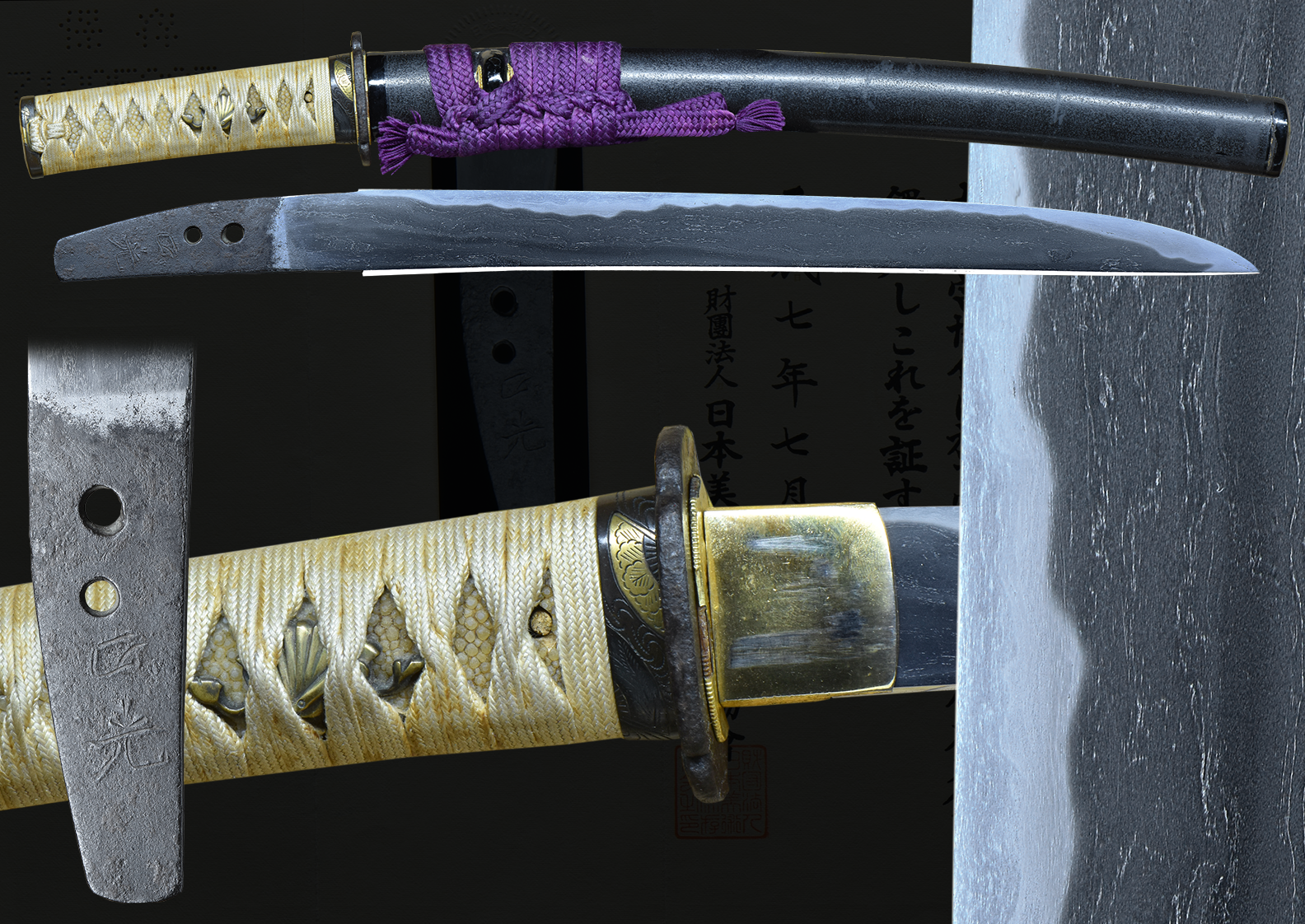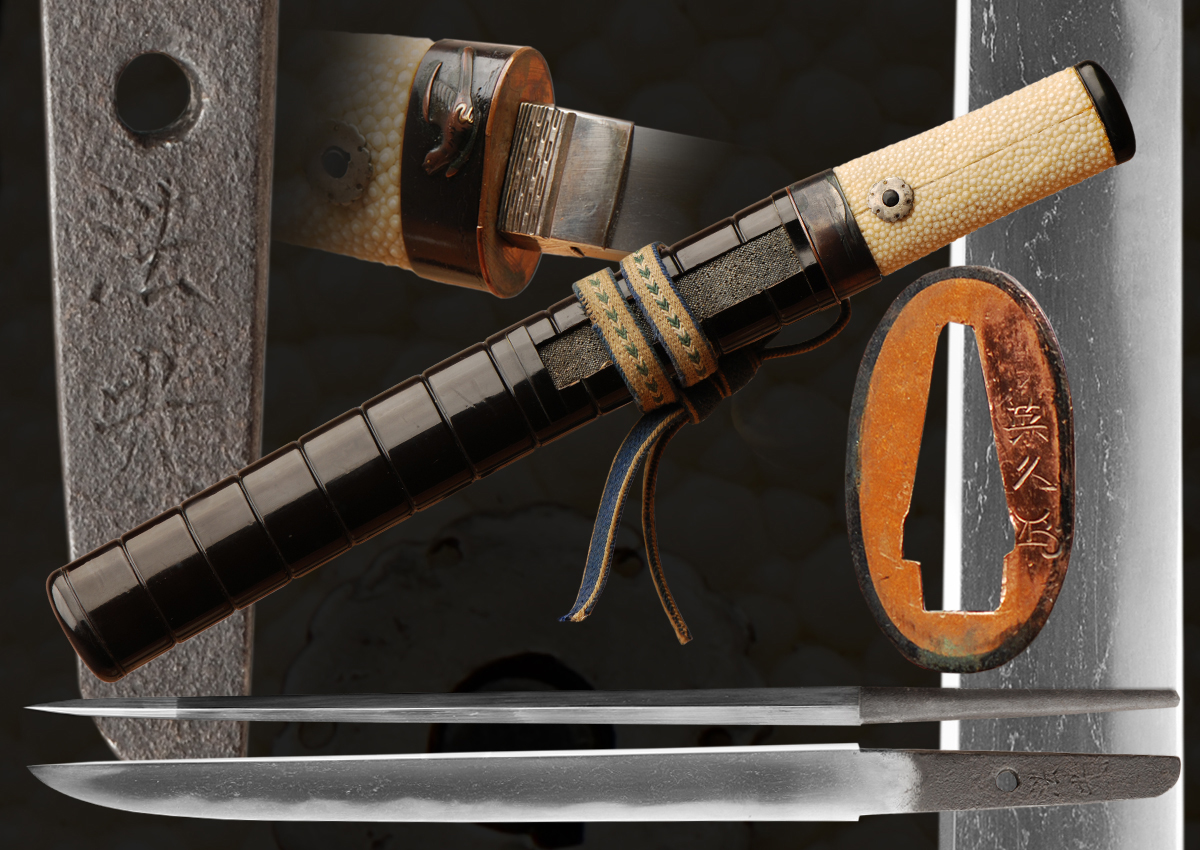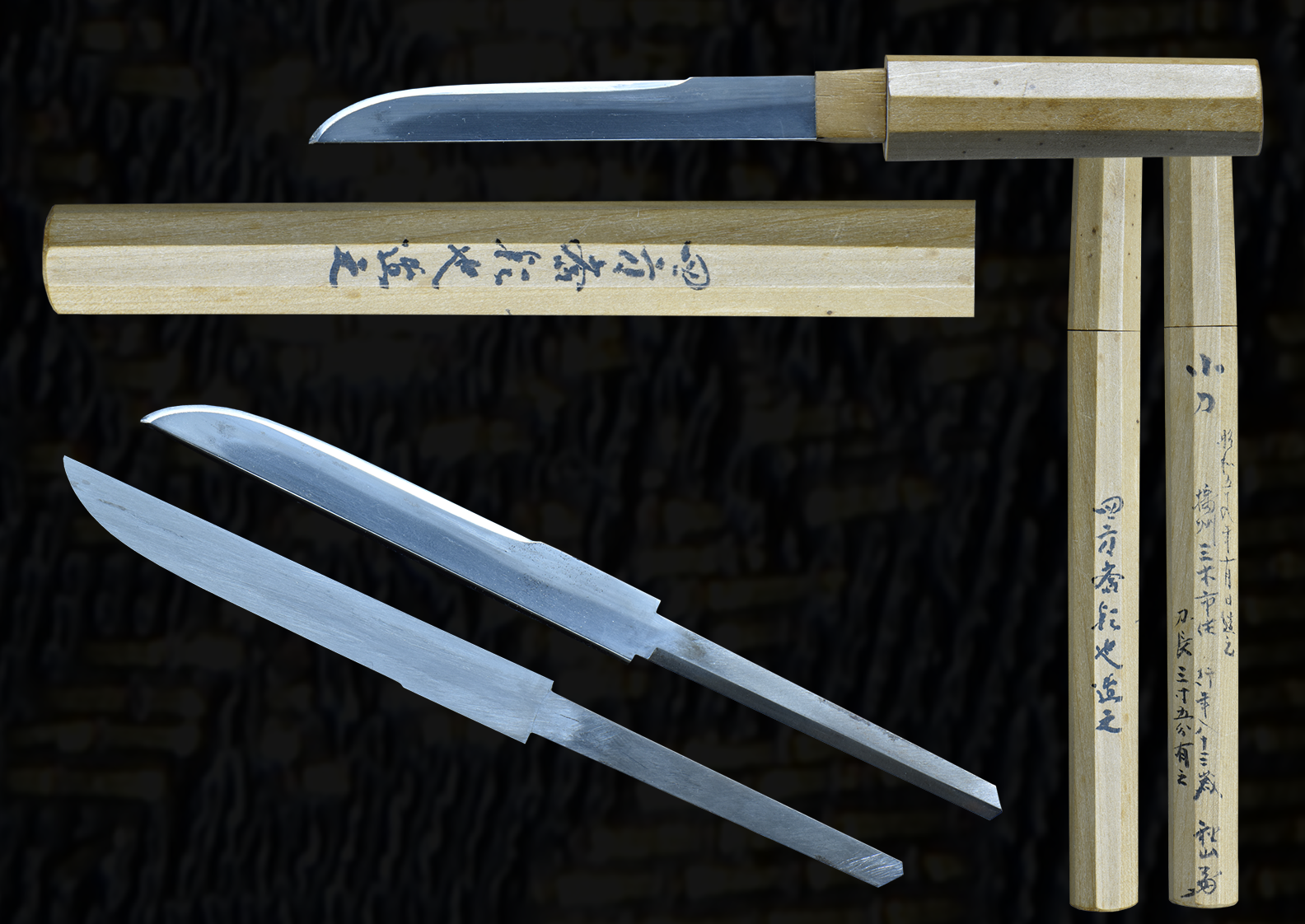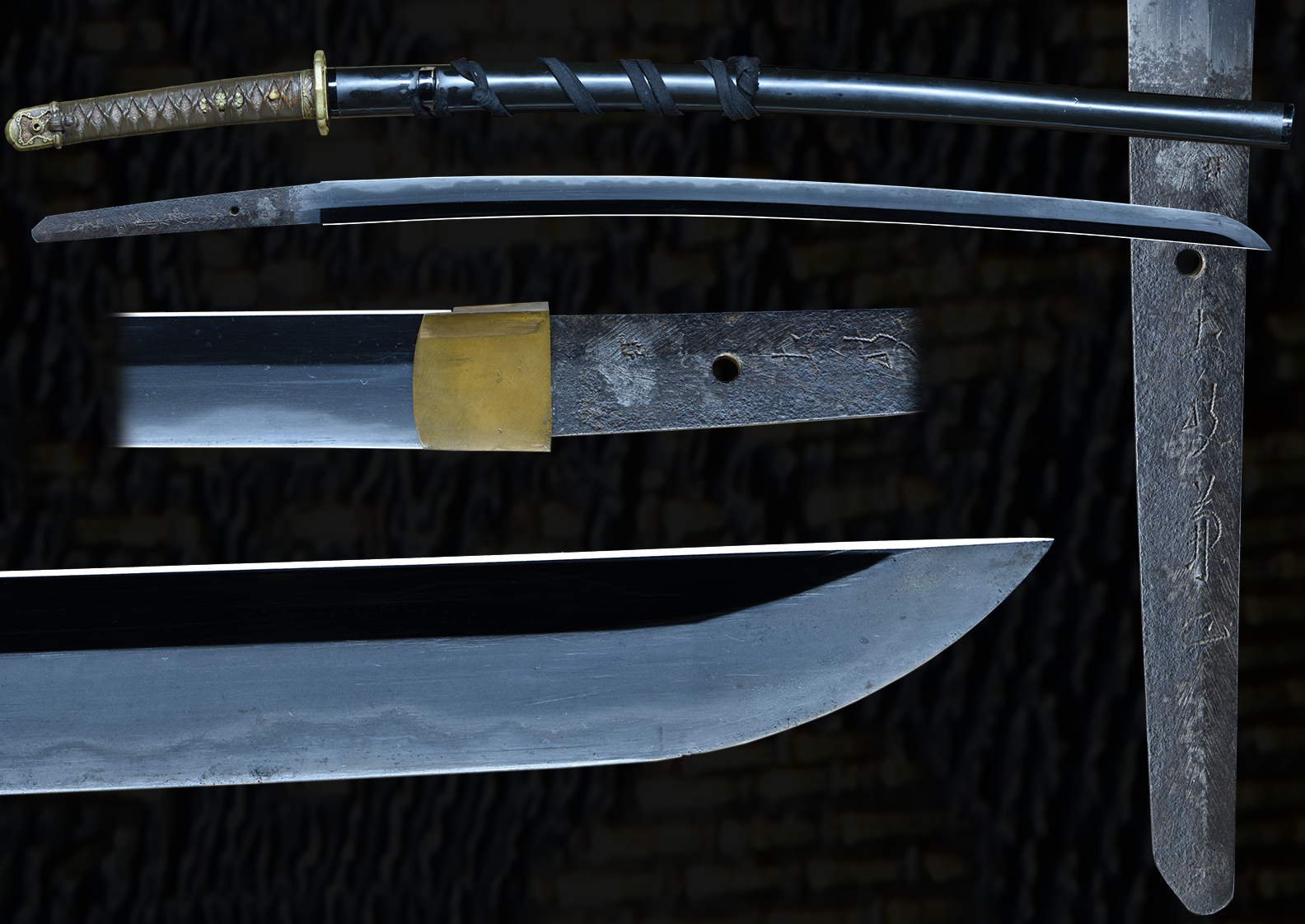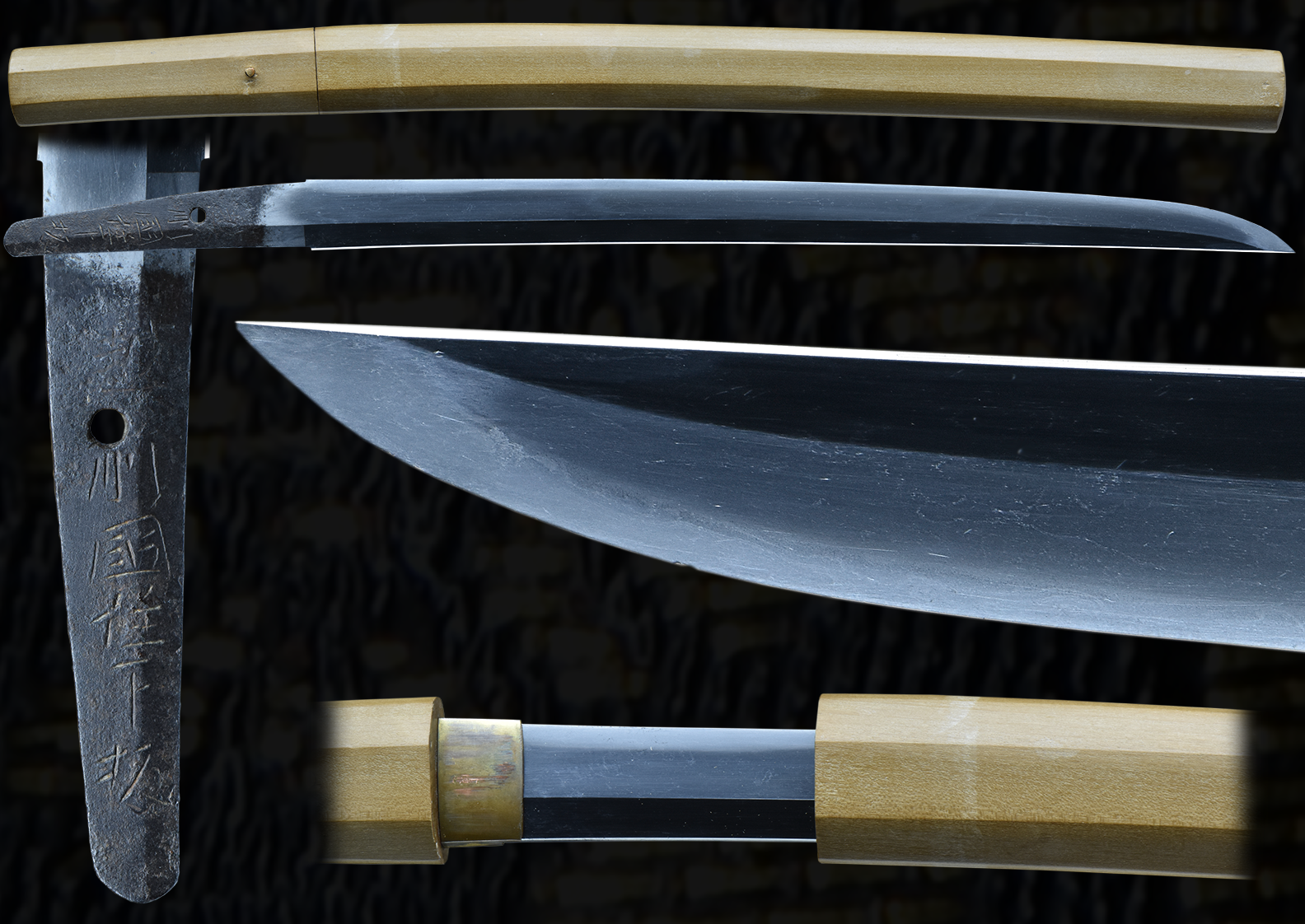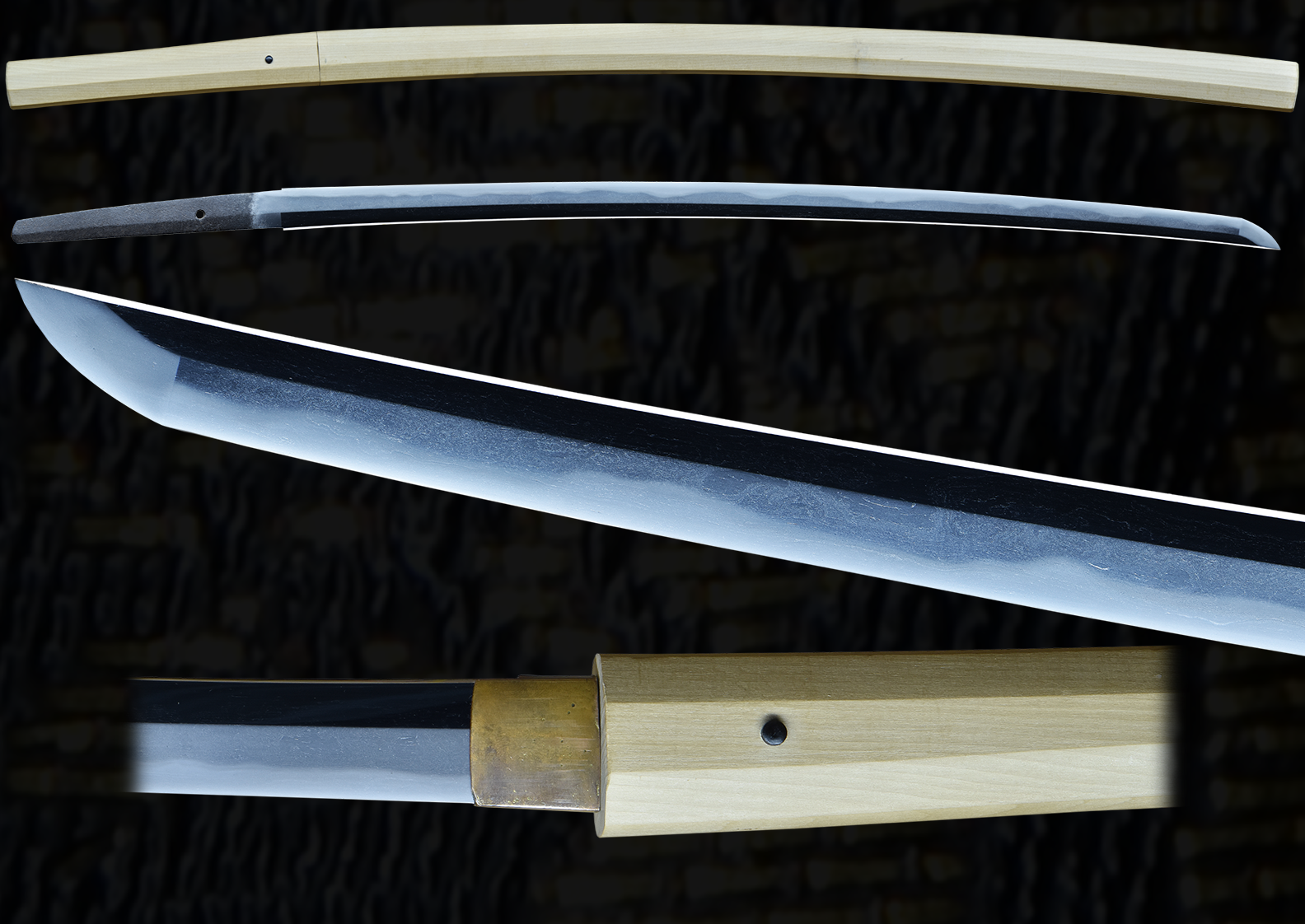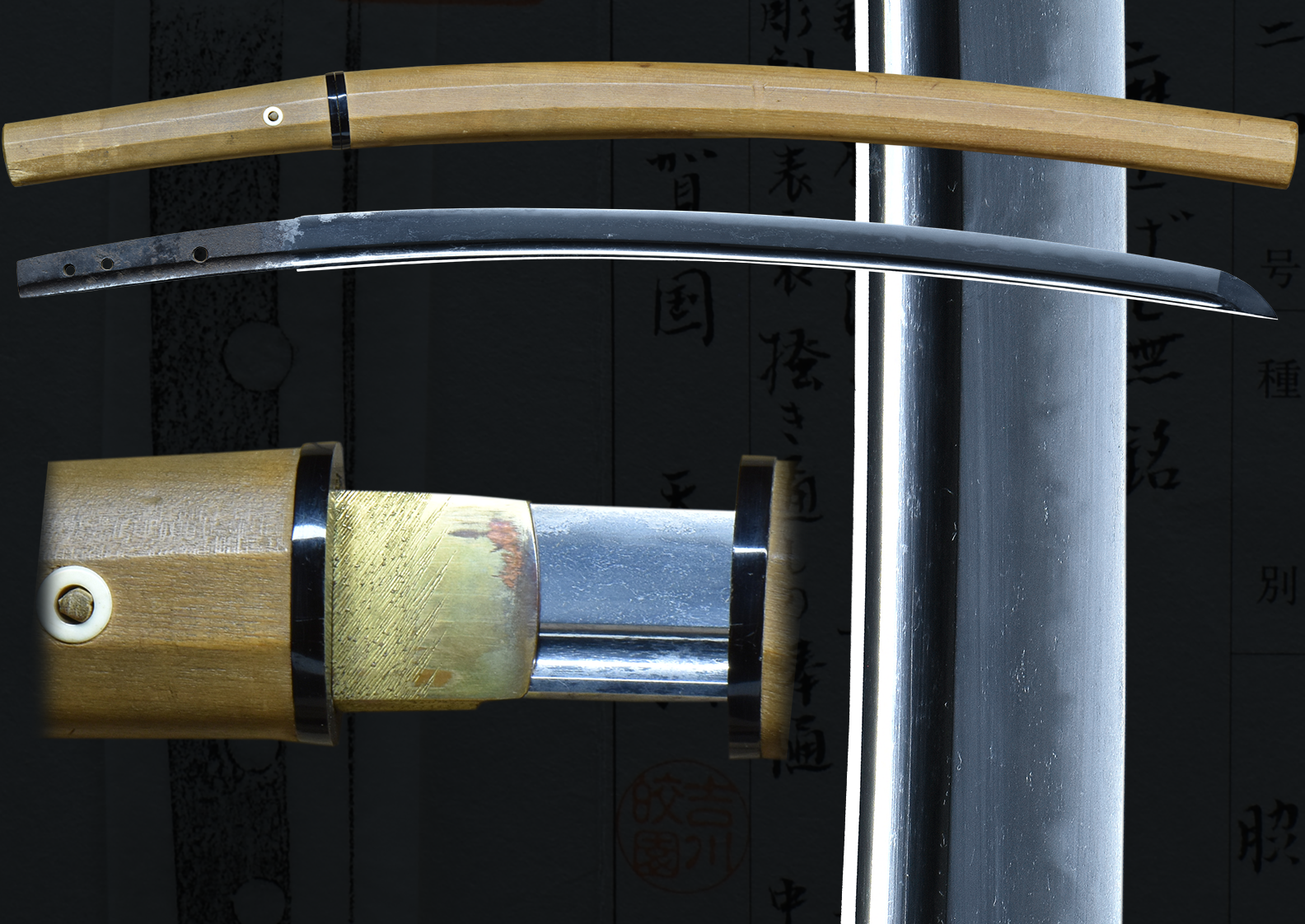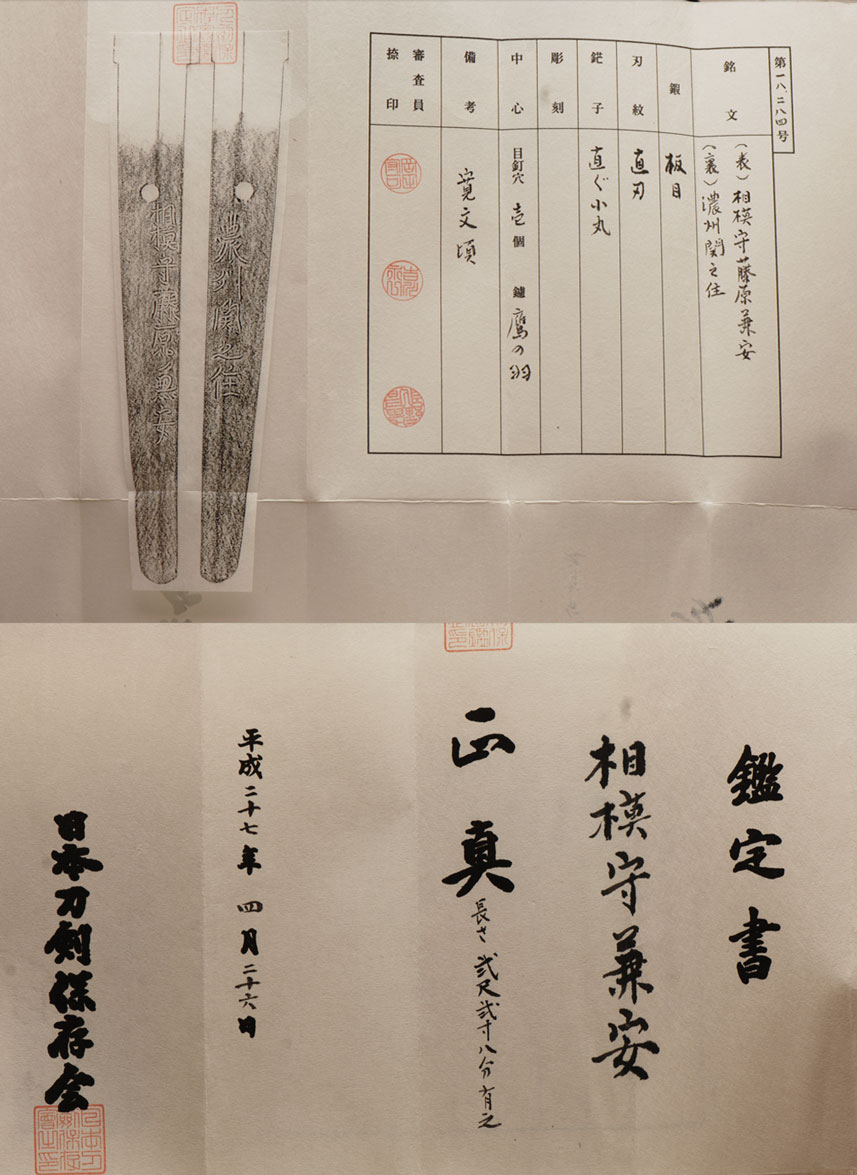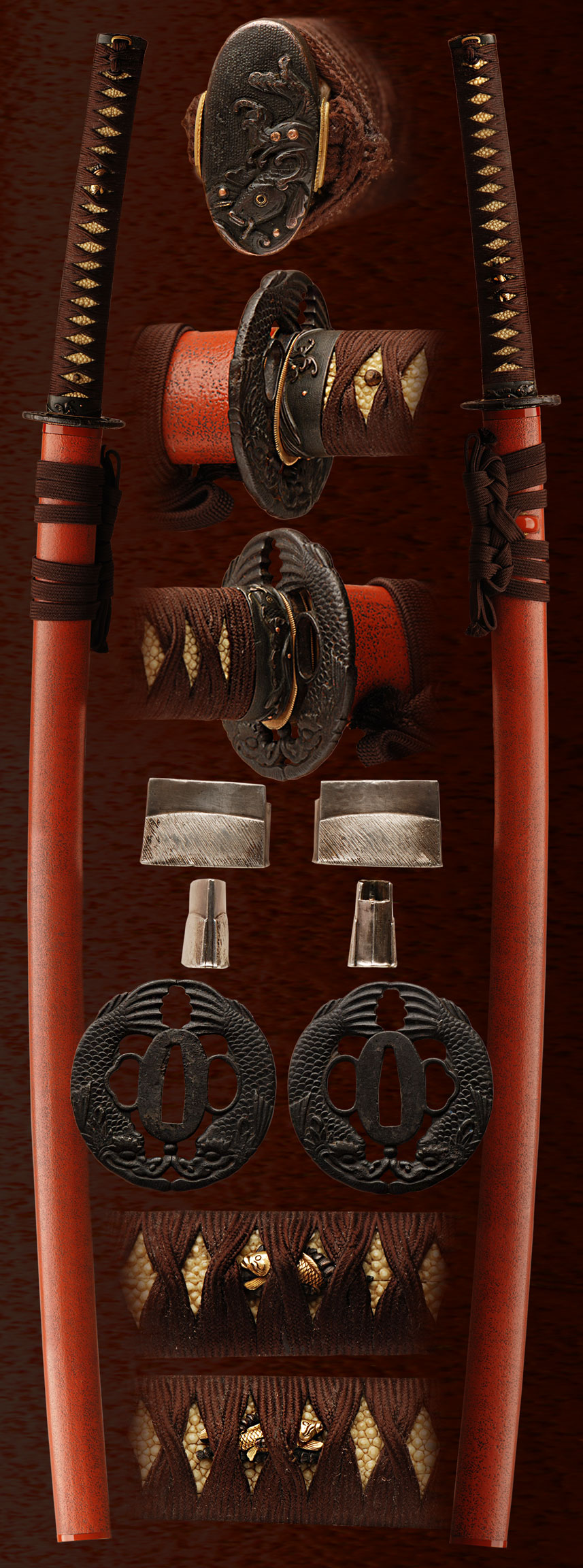This is a very interesting katana in the Shinto Mino tradition and of the Kanbun Shinto era. It is in a very good polish. The overall sugata of this sword is impressive and the hamon is loaded with activity. The hamon contains plentiful nie in sugu-ha with a slight hint of notare-ba. The hada has an oily appearance and forged very well with some areas of O- hada mixed in. This blade comes with koshirae. The sword furniture is made up of a Carp or Koi motiff and in good condition. The fuchi / kashira are of waves with Carp or Koi menuki. A complete package of a papered and mounted sword in good polish.
FUJISHIRO HAS THIS TO SAY ABOUT THIS PARTICULAR SMITH:
KANEYASU SAGAMI NO KAMI [KANBUN 1661 MINO] SHINTÔ CHÛSAKU
He has the Gô of Gotôhichirô, and he entered the Mon of Ômura Kaboku. (Wazamono)
Signatures: SAGAMI NO KAMI KANEYASU
NÔSHÛ SEKI GEN’ICHI KANEYASU
The Koi Fish
The legend says the Chinese then raised the koi in their rice patty fields to be used for food, especially during the long winter months, and not for pets. The Chinese then passed on their knowledge of raising koi to the Japanese. Raising koi in ponds began in Niigata, Japan during one particularly harsh winter.
Niigata Koi
During this very harsh winter, Japanese farmers in Niigata could not fish and could not sustain any crops. As a result, the farmers began building ponds in which to raise koi in order to feed their families. During this time, many farmers began noticing different color mutations on the skin of the newly bred koi. So they carefully chose the most beautifully colored fish and bred them in separate ponds to keep as family pets.Koi continue to be bred as pets and enjoyed for their wonderful coloring. Today, there are over 100 different color types of koi fish.
General Symbolism
Many of the attributes of the koi symbolize several lessons and even trials individuals often encounter in life. The koi fish has a powerful and energetic life force, demonstrated by its ability to swim against currents and even travel upstream. Some of the characteristics associated with the koi include:
Good fortune,Success, Prosperity, Longevity, Courage, Ambition, Perseverance
The saya is of a Red stone textured lacquer and with iron tsuba of Carp or Koi. The blade is signed and was papered to ‘ Sagami no kami Fuji wara kane yasu with Noshu Seki Ju on the other” the blade is ubu with 1 hole and masame can be seen on the blade. there is matching brown ito and sageo.
- Mei: right side reads (Sagami no Kami Fijiwara Kaneyasu)
Left side reads (Noshu seki ju) - Date: Kunbun era (1661)
- Nagasa: 27 1/4 inches
- Sori: 9.0 mm
- Width at the ha-machi: 28.9 mm
- Width at the yokote: 14.4 mm
- Thickness at the mune-machi: 5.8 mm
- Construction: Shinogi zukuri
- Mune: Iori
- Nakago: Ubu
- Kitae: Itame
- Hamon: Midare suguba
- Boshi: ko-Maru
- Condition: Good polish
Click to Enlarge Image
(shipping and insurance included)
Email us if your interested in this item and remember to include the order number for this item: fss-796.
Click to Enlarge Image
For Sale
